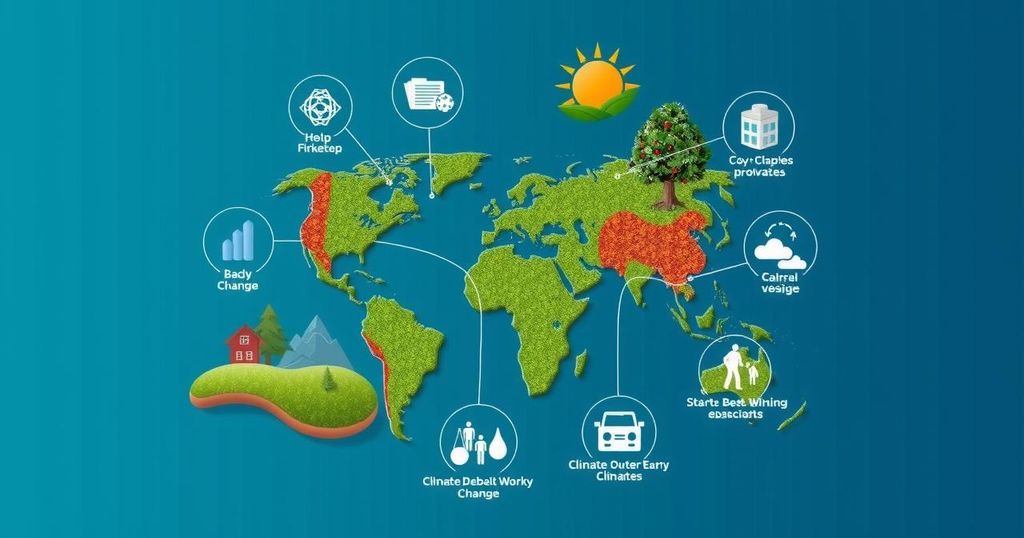On October 21, 2024, the International Fund for Animal Welfare launched new guidelines to assist countries in integrating wildlife conservation into their climate action plans for the upcoming 2025 Nationally Determined Contributions. These guidelines provide ten actionable steps that outline the importance of wildlife in carbon sequestration and the economic benefits of conservation efforts, aiming to enhance both biodiversity and climate resilience.
On October 21, 2024, during the 16th Conference of the Parties (COP16) to the UN Convention on Biological Diversity held in Cali, Colombia, the International Fund for Animal Welfare (IFAW) introduced a set of comprehensive guidelines aimed at assisting governments and policymakers in incorporating wildlife conservation into their Nationally Determined Contributions (NDCs). This initiative is particularly relevant as nations prepare to update their NDCs for 2025 in accordance with the objectives of the Paris Agreement. The newly launched guidelines provide actionable recommendations for countries to recognize and enhance the integral role of wildlife in carbon sequestration and climate resilience. Simon Addison, IFAW’s Climate Advisor, emphasized the immediate importance of these guidelines, asserting that they offer governments a distinct and practical roadmap to leverage wildlife conservation as a means of mitigating climate change effectively. He highlighted that these guidelines offer ten actionable steps which nations can employ to incorporate wildlife into their NDCs, thereby augmenting efforts to combat climate change while simultaneously promoting biodiversity conservation. The guidelines debate a critical oversight present in many current climate plans, which often fail to incorporate wildlife conservation strategies. The omission of wild animals in greenhouse gas inventories and climate strategies by numerous countries—particularly those rich in biodiversity yet vulnerable to climate change—represents a significant missed opportunity to enhance climate resilience and biodiversity protection. According to Addison, the guidelines provide nations the tools to strategically approach wildlife conservation not only as an environmental priority but as a foundational element of climate action. This integration is designed to amplify national efforts in both mitigation and adaptation strategies against climate change. The guidelines elucidate essential aspects such as the pivotal role of wildlife in carbon sequestration, wherein species like elephants and large predators are recognized as keystone species that fundamentally contribute to carbon storage in ecosystems. Furthermore, the guidelines entail a concise ten-step framework for countries to utilize, ranging from the identification of key species for protection to the incorporation of wildlife considerations into national greenhouse gas inventories while aligning with other policy initiatives. Moreover, the economic advantages of integrating wildlife conservation alongside rewilding and restoration efforts are underscored, particularly in biodiversity-rich Least Developed Countries. Such integration not only fosters climate-resilient development but also generates sustainable livelihood opportunities for vulnerable communities, potentially unlocking new avenues for carbon financing.
Climate change poses significant threats to ecosystems and wildlife across the globe. In response to this challenge, international agreements such as the Paris Agreement necessitate each participating country to prepare and submit NDCs, which outline national climate actions. However, many NDCs have historically neglected the role of wildlife and ecosystems, particularly in biodiversity-rich regions that are also vulnerable to climatic changes. Recognizing this gap, the International Fund for Animal Welfare (IFAW) has developed comprehensive guidelines aimed at harmonizing wildlife conservation with climate action, hoping to influence governments in integrating these critical considerations into their climate strategies.
In summary, the IFAW guidelines provide invaluable resources for governments seeking to synergize wildlife conservation efforts with national climate action plans. By recognizing the role of wildlife in carbon sequestration and ecosystem health, these guidelines present a practical approach for nations to enhance their climate resilience while preserving biodiversity. The proactive ten-step framework not only offers clear actions for implementation but also highlights the economic benefits of integrating wildlife conservation into climate strategies, ultimately contributing to sustainable development and effective climate action.
Original Source: www.ifaw.org







